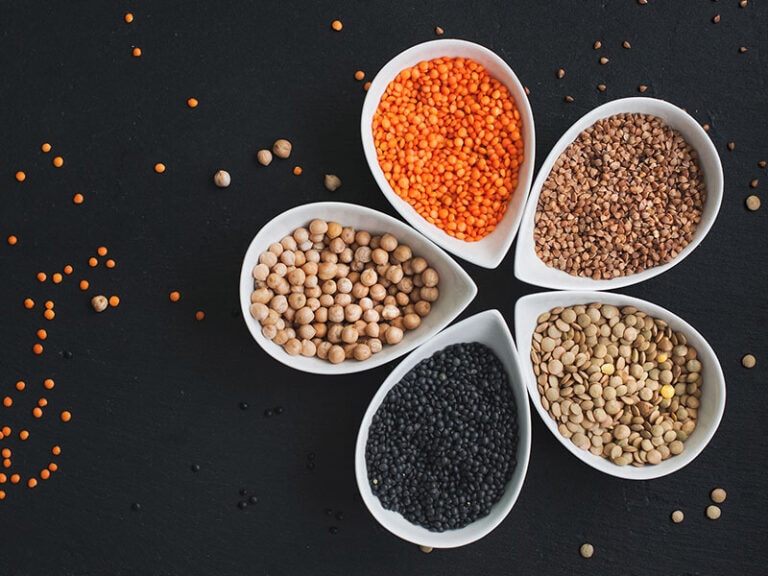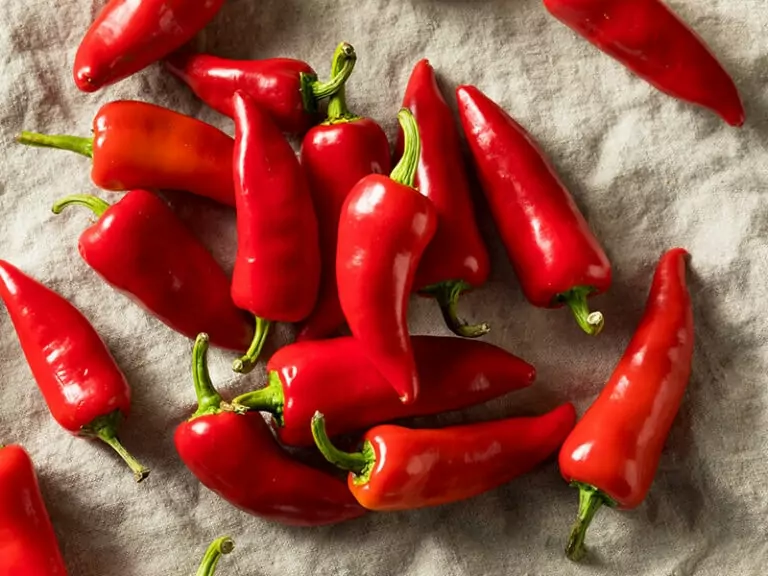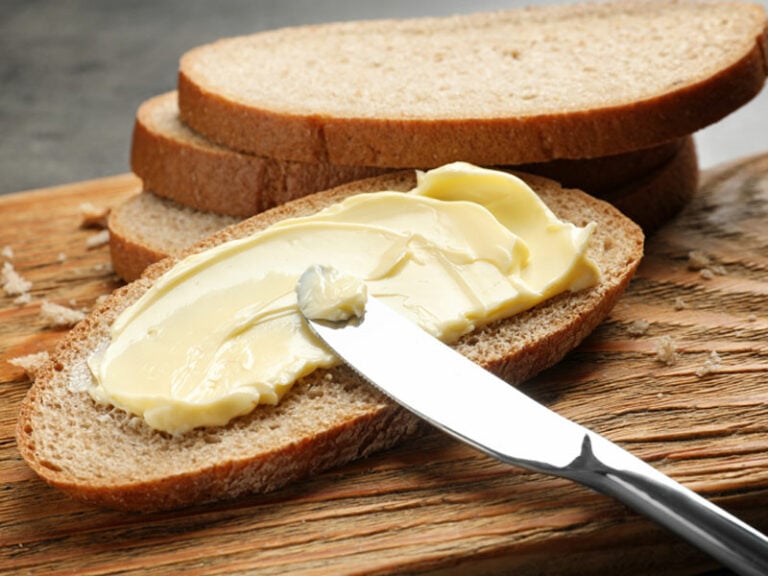Hard anodized vs. non-stick: Which is better? Do you have your choice? If you are wondering about this topic, this article will give you a detailed answer with a specific comparison between 2 popular cookware.
Both hard anodized vs. non-stick cookware are indispensable things in every kitchen. However, each type will suit a different cooking purpose, so you need to know the differences between them to use them appropriately.
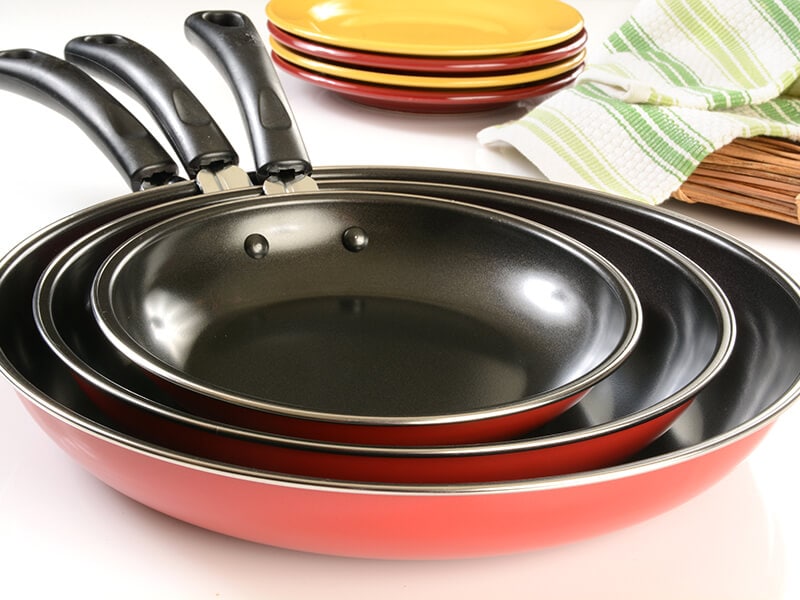
A Short Brief About Hard Anodized Cookware
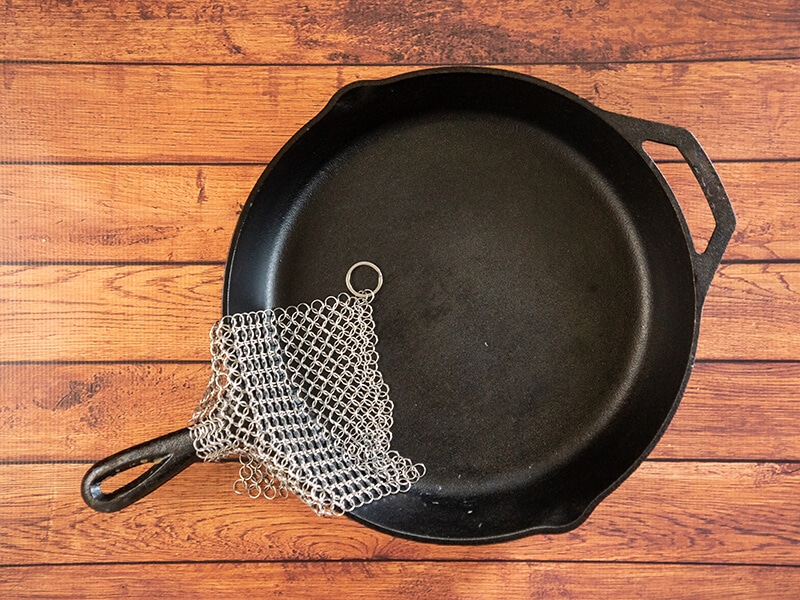
Hard anodized cookware comprises an aluminum base. These household goods are coated with a layer of 5-micrometer anodized coating that helps prevent reacting to food when cooking.
Therefore, many people often consider hard anodized cookware a non-stick, but not vice versa. Calphalon company was the inventor of hard anodized cookware by creating this appliance in the 1960s without a non-stick surface.
Since food usually sticks during cooking, the non-stick coating was applied to hard anodized cookware at the end of the 1980s. This great idea helped effectively eliminate the food sticking problem.
Boost your knowledge with great information about the origin of hard anodized cookware.
A Few Words About Non-Stick Cookware
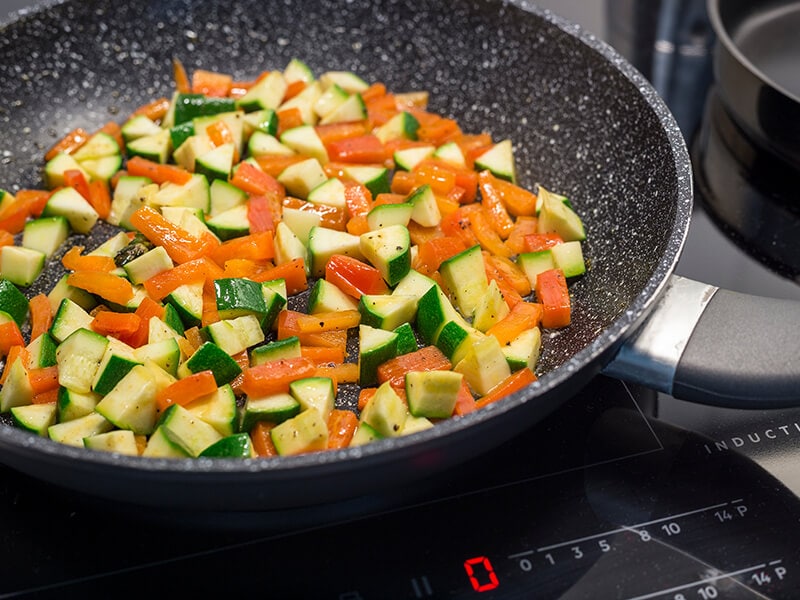
Non-stick cookware is also an aluminum-based cooking appliance. It has high non-stick capability thanks to the appearance of a PTFE (polytetrafluoroethylene) coating, which is a fluorocarbon solid (1). Plus, manufacturers can use titanium or ceramic before applying this non-stick coating.
To enhance the non-stick resistance, many layers are added to the cookware’s surface. The role of this coating is to avoid food sticking to the cookware during cooking. This appliance can withstand temperatures of 400 to 500 °F when cooking.
Non-stick cookware debuted in France in 1954. Gregoire, a famous French engineer, was the man behind the invention of non-stick cookware. In 1961, this appliance was introduced to people in the United States and quickly spread to other countries.
Comparison Table Between Hard Anodized And Non-Stick
It is necessary to look at the comparison table below to have general information about the differences between hard anodized and non-stick before getting into the main part.
What Is The Difference Between Non-Stick And Hard Anodized?
If you want to choose one of the two hard anodized or non-stick, the detailed comparison in this section will help you know the option that suits your wishes. Let’s check it!
Pricing Of Non-Stick And Hard Anodized
Compared to hard anodized, the need to use non-stick cookware is more because they are more convenient. Meanwhile, although hard anodized has good durability, its popularity is worse than non-stick cookware.
Regarding the prices, hard anodized might be higher. Still, there is no significant difference between these two appliances, so you should focus on the specifications and their advantages to choose the appropriate cookware that fits your desire instead of their prices.
Which Is Easier For Cleaning?
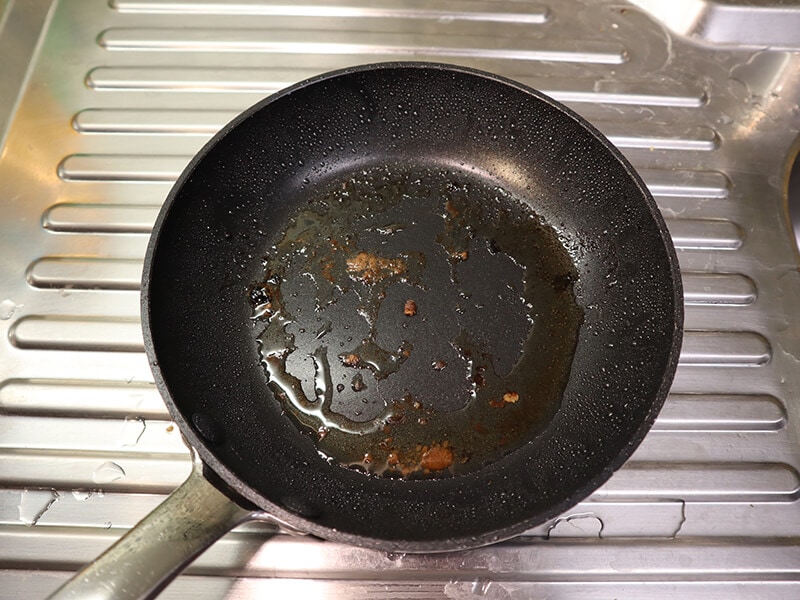
Thanks to the non-stick coating, cleaning non-stick cookware is straightforward and quick. This coating helps prevent food from sticking to cookware, so you don’t need to use many detergents and time to eliminate them.
On the other hand, hard anodized non-stick resistance is not as good as non-stick cookware, so burnt food can stick to the pan surface, making it difficult to clean, especially fried food. However, it’s effortless to hygiene a hard anodized pressure cooker when you cook rice or gravies in this appliance.
Hard Anodized And Non-Stick: Which Is Healthier?
In terms of safety, hard anodized is safer than non-stick cookware because of its high non-reactivity and heat tolerance. Exposing the pan or pot to high heat doesn’t release carcinogenic fumes that can cause cancers (2).
Nevertheless, it is best not to use hard anodized cookware with scratched and peeled surfaces since aluminum can expose and leak into your food during cooking.
Though the coating on non-stick cookware prevents food from sticking, it is dangerous when you overheat the cookware because it may emit carcinogenic fumes. This fume can have adverse effects on your health.
Like hard anodized cookware, leaked aluminum can threaten your health when you cook food in non-stick cookware with a seriously damaged surface.
Durability Between Hard Anodized And Non-Stick
Hard anodized cookware is usually more durable than non-stick ones. The hard anodized surface isn’t prone to damage when you use metal spoons or utensils to stir food while cooking. However, don’t clean it with abrasive materials, as its life will be shortened.
The surface of non-stick cookware is susceptible to scratches and damage if you keep it improperly. You can throw it early if you use metal utensils during cooking. Typically, its non-stick coating will lose its effect after about 2 to 3 years.
Differences In Stick Resistance
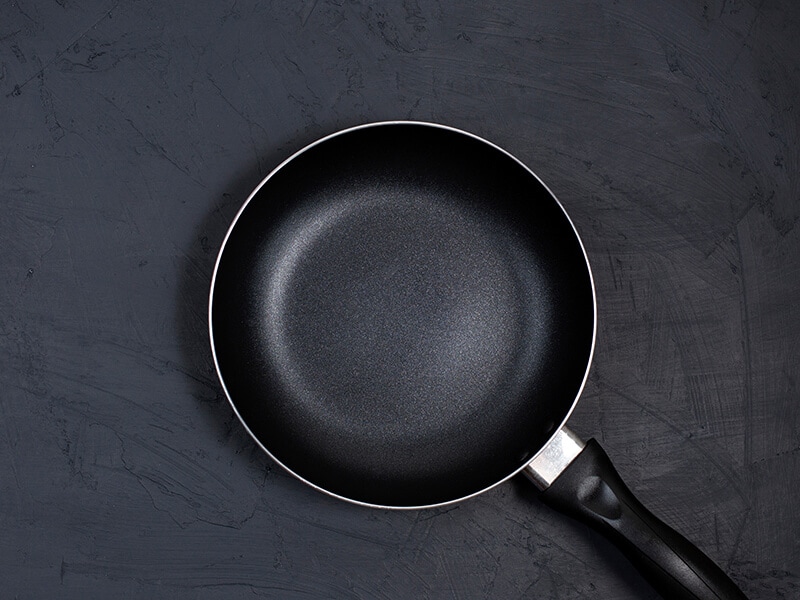
There is no complaint about the stick resistance of non-stick cookware. Its coating stops food from sticking to the surface during cooking. Therefore, you can simply and effectively make fried meat, fish, and other dishes on this cookware without oil.
In contrast, hard anodized stick resistance is not on the same level. Therefore, chefs need to use a large amount of butter or oil to prevent food from sticking to its bottom surface.
Food You Can Cook
Both hard anodized and non-stick cookware conduct heat evenly, so they are perfect for induction, gas, or electric stoves. They are great for cooking delicate food that needs lots of attention, like eggs or fried fish, but non-stick is still better than hard anodized.
However, if you want to make steak, stews, or meat that cooks slower, hard anodized is a more compatible option.
The Main Composition Of Non-Stick And Hard Anodized Cookware
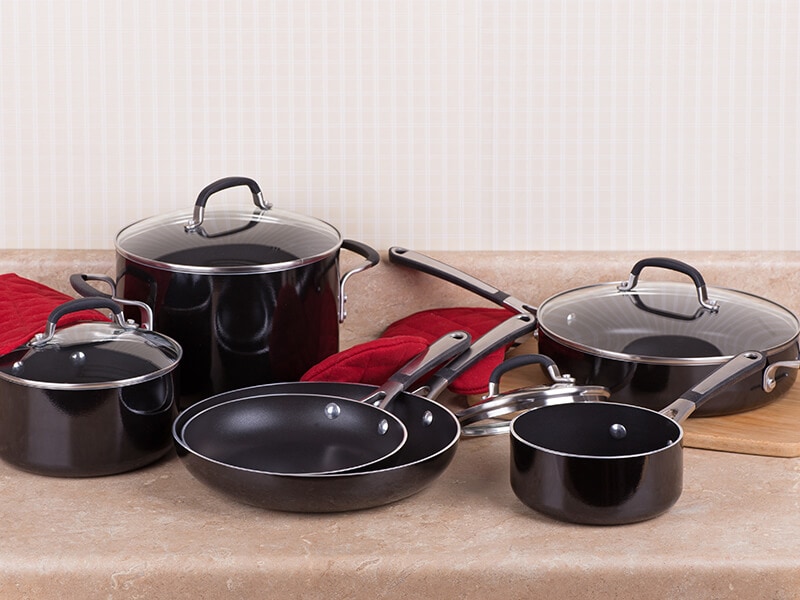
Most hard anodized cookware is made up of aluminum. You can get hard anodized with an oxidized exterior layer made by allowing aluminum to pass through an electrolytic process. It has a protective layer and a hard surface after the aluminum is dipped in chemical materials.
The main materials for making non-stick cookware are diverse with aluminum, stainless steel, and ceramic-based. The non-stick coating comprises PTFE (Teflon), silicon, titanium, or ceramic.
Reactivity Of Non-Stick And Hard Anodized
If you are searching for an appliance that is non-reactive, hard anodized is an excellent suggestion. Thanks to this fantastic feature, it can deal with acidic foods like lemon juice, wine, and tomatoes.
Like hard anodized, non-stick cookware is also a non-reactive appliance. However, it is at a different level than the hard anodized one.
Check out the differences between hard anodized and non-stick cookware.
Hard Anodized Non-Stick And Different Types Of Non-Stick Cookware
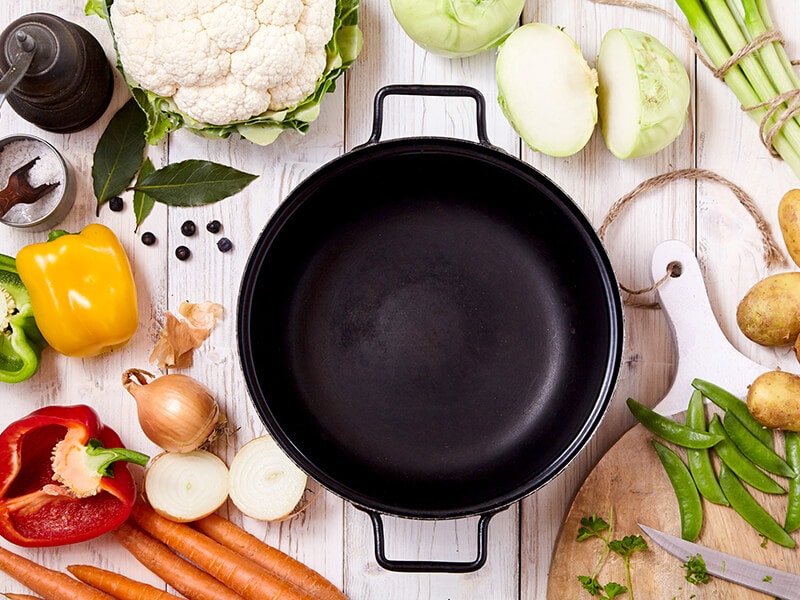
As I mentioned, some hard anodized models are designed with non-stick coating. For that, let’s compare this version with other types of non-stick cookware.
Stainless Steel Non-Stick And Hard Anodized Non-Stick
Since steel is a magnetic material, stainless steel non-stick will work well with induction cooktops. For those not in the know, only magnetic-based cookware (magnetic steel or iron) can operate on induction cooktops.
Of course, you can use hard anodized cookware on induction cooktops, but it will not be as effective as stainless steel.
Hard anodized cookware will heat up and retain heat better than stainless steel because they contain an aluminum core. Meanwhile, stainless steel cookware only has a thin aluminum core between 2 layers of stainless steel.
In terms of durability, hard anodized is better than stainless steel cookware. Plus, the price of hard anodized non-stick items is lower than stainless steel non-stick.
Hard Anodized Non-Stick And Aluminum Non-Stick
If you want to buy another appliance that is more inexpensive than hard anodized non-stick cookware, aluminum-based non-stick is a great option. Nevertheless, this option is not healthier and safer than hard anodized non-stick.
The amazing non-reactive feature helps limit the metal leak that can harm your health. In addition, hard anodized non-stick is harder to rust and deform than aluminum non-stick.
Pros And Cons Of Hard Anodized And Non-Stick Cookware
Apart from the comparisons in the above sections, it is better to know the advantages and disadvantages of 2 options to have a suitable and best selection.
Advantages And Disadvantages Of Hard Anodized Cookware
Below are some dominant pros and cons of hard anodized cookware you need to know before purchasing this appliance:
Advantages:
- Hard anodized cookware is durable because this appliance is hard to damage, warp, or rust.
- You don’t need to season hard anodized before cooking, so you can clean this household utensil quickly.
- Hard anodized is non-reactive, so you can cook acidic ingredients like lemon juice, wine, or tomatoes on this appliance.
- It is a health-friendly piece of equipment because your food will not have metallic flavor when cooking on hard anodized, thanks to its metal leakage resistance.
- Due to its high durability, hard anodized cookware has excellent scratch resistance. Therefore, you can store them in a tight space by stacking them on each other.
- Hard anodized has great conductivity, so it is good at heating up and keeping heat for a long time.
Disadvantages:
- Like non-stick cookware, hard anodized only withstand temperatures of up to 500 degrees F.
- This is not a suitable option for cooking on induction stovetops.
- Short longevity is another downside of hard anodized cookware (about 5 years)
- You should not wash or clean this household stuff with the dishwasher.
- Compared to other types of cookware, hard anodized is heavier.
- Its design is simple, with 2 primary colors, charcoal and dark gray.
- Despite the high durability, hard anodized can be scratched if you stir food with metal utensils.
- They are not good at avoiding food sticking problems, so you must add butter and oil before cooking food.
Instantly Explore hard anodized cookware’s pros and cons instantly.
Upsides and Downsides Of Non-Stick Cookware
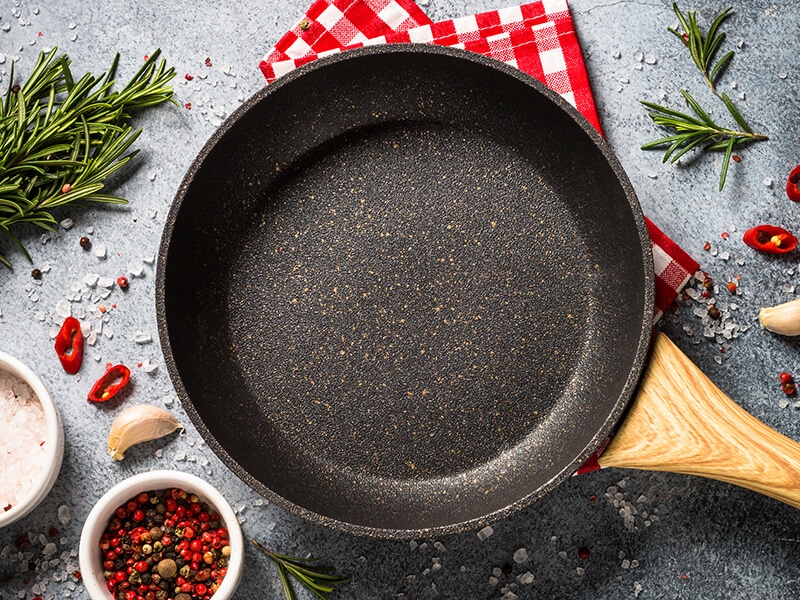
Do you know the pros and cons of non-stick cookware? It is time to boost your knowledge with helpful information about this topic.
Advantages:
- It is good for your health since you don’t need to add too much oil or butter when cooking with non-stick cookware.
- It’s easy to clean and maintain this appliance. However, you shouldn’t use an abrasive sponge to scrub it if you don’t want to see scratches on its surface.
- Good at preventing food from sticking to the bottom surface.
- Beautiful design with various colors.
Disadvantages:
- You cannot clean or wash non-stick cookware in the dishwasher.
- It can emit carcinogenic fumes if you overheat this appliance.
- The non-stick coating can be damaged if you heat the cookware at a high temperature.
- It is easy to get scratched when you use metal utensils or spoons to stir food while cooking.
- You can put it in the oven to cook because of its low heat tolerance.
High Recommended Brands For Excellent Hard Anodized And Non-Stick
Let’s check the trust-worthy brands where you can purchase high-quality non-stick and hard anodized cookware.
All-Clad
All-clad is a famous brand name for producing premium non-stick cookware. With more than 50 years of experience, the quality of its handcrafted cookware, like cookie sheets, frying skillets, or saute pans, will not let you down.
You may try the All-Clad HA1 Non-Stick Cookware Set with high-quality pans and pots in your kitchen to create delicious meals.
Calphalon
This renowned brand features top-notch cookware, cooking appliances, barware, and other kitchen tools. For convenient and safe cooking, it’s great to pick Calphalon 10-Piece Pots and Pans Set with stay-cool handles and non-stick capability.
Cuisinart
Cuisinart’s products will help your cooking be more straightforward. You can save time with modern appliances or good cookware. If you are looking for a great hard anodized item, Cuisinart 622-30G Hard Anodized Skillet is an excellent choice.
T-Fal
This is a leader in selling long-lasting non-stick and hard anodized cookware in the US market. One of the best-sellers of this brand is T-Fal Ultimate Hard Anodized 17 Piece Cookware Set that features durable and eye-catching pots and pans.
FAQs
If you want to know more information about non-stick and hard anodized cookware, let’s focus on reading these commonly asked questions below.
Which Is Your Choice: Hard Anodized Or Non-Stick?
Which do you want to buy: hard anodized or non-stick? I believe you have your decision after reading this article. I hope you can create mouthwatering dishes with non-stick and hard anodized cookware in your kitchen.
What other differences between them do you know? Feel free to leave them in the comment part. Furthermore, if you find this post valuable, do not hesitate to introduce it to others. Many thanks!
References
- “Polytetrafluoroethylene.” Wikipedia.
- “Welding.” Cancer Council.


